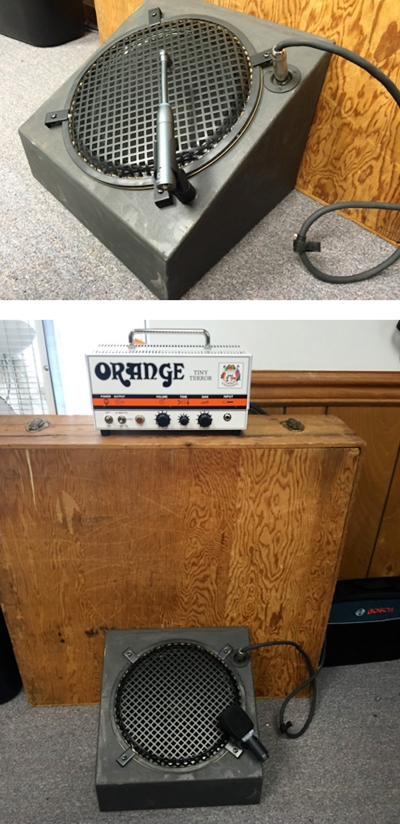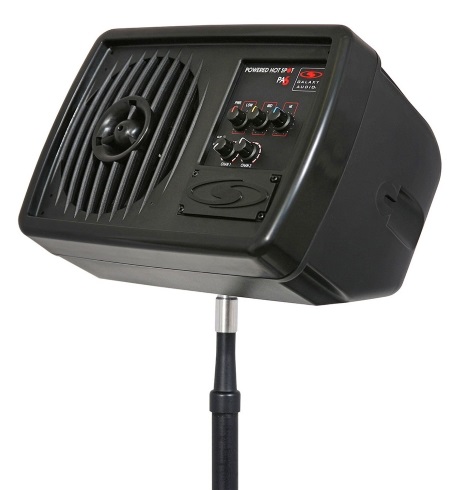
The Mix Component
How do we best choose what actually goes into which monitor mix? My view is that single-send monitor mixes are evil. I see them at churches and small clubs all the time, where a single monitor send drives several monitor wedges for multiple singers and musicians.
It usually doesn’t work very well since everyone wants to hear themselves louder than the other musicians, and can lead to an “arms race” where everyone on stage keeps playing louder and asking for more monitor level, with the sound bouncing off the back wall louder than the PA. The rule we use in our own productions is one monitor mix per musician whenever possible. So if there are four players on stage, we put up four monitor mixes, and so on.
What each musician really wants to hear is “me” (themselves), so we start there, and then fill in with whatever other instrument or vocal they need to cue from. Simply putting everything in every monitor generally doesn’t work well because now we’re back to each “me” not being loud enough in the mix problem.
Separate monitor mixes also allows each monitor to be smaller and lower wattage, especially since they can now be mounted much closer to their respective musician. This isn’t as complicated or expensive as it may seem. A modern digital console typically will have 8 to 12 spare aux channels that can drive active monitor cabinets, and the mixes can be easily setup with an iPad right on stage.

I especially like the Galaxy Hot Spot with on-board amplification and equalization for distributed personal monitoring since it has a real crossover and tweeter, and it’s powerful enough for vocals on many small stages. Yes, there’s not significant bass response from the small woofer, but there is usually already a ton of bass bleed on stage from the PA.
Physical Realities
Why does turning down the monitors make musicians turn up their stage amps? If they’re used to straining to hear themselves due to excessive stage volume, then they’ll fight for every decibel of monitoring. This contributes to even higher levels on stage.
Also, it’s sad but true that many musicians have been deafened by decades of playing on loud stages. This isn’t only rock musicians with loud amps—I’ve met a number of church organists that are hard of hearing after regularly sitting close to really loud organ pipes. To entice them to turn down the volume they’re sending from an electronic organ to the sound system, I generally provide a personal monitor positioned as close to their face as practical. This can be done with something along the lines of a Galaxy PA6S on a mic stand right at keyboard level.
I’ve found that you can actually “gaslight” them if you want. Watch them react as you turn the keyboard level up in the system and down in their personal monitor cabinet. As the monitor level goes up, they tend to back off on the volume pedal. Provide less monitor and they step down harder on the pedal. No, this is not a passive-aggressive thing (but it could be). The goal is finding the “sweet spot” of monitor SPL that they’re comfortable with.
One time, I dealt with a keyboard/organ player who kept moving her stage amp farther and farther away; eventually it ended up on the other side of the stage. Of course, all the other musicians were complaining that all they could here was her keyboard. So when she took a break I moved her monitor directly beside her keyboard and tipped it back to point at her face, turning turned it down to a moderate monitoring level and then listening to it myself.
When she returned, she complained that it would be too loud and that’s why she kept moving it farther away. I explained that there was a DI send from her amp and we could turn it up in the house mix to whatever it needed to be. Nobody had ever told her that before, and she assumed that she needed to play loud enough to “reach the back of the room.” Again, a lot of this is about educating musicians.
The same sort of thing happened at a church that had a Hammond B3 organ and twin Leslie speaker cabinets. The organist had turned down the volume on the cabinet right beside him and turned it up on the cabinet across the stage. He was pushing the swell peddle to floor so he could hear himself play, but it was really loud in the room and drowned out the choir. I convinced him to reverse the volume levels between the two cabinets. Problem solved and everyone was a lot happier.
Next time we’ll begin to explore ways to control guitar amp levels on stage without compromising tone or playability. Several solutions will be presented, and you’ll be able to pick and choose the one (or ones) that work best for your situation.
